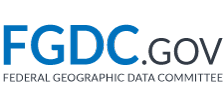FGDC is proud to announce the Version 3.0 release of the Work Zone Data Exchange (WZDx) Specification, facilitated by the hard work of all those involved in the Work Zone Data Working Group (WZDWG). A Reference Document laying out version 3.0 of the WZDx Specification in-full can be found on GeoPlatform. The WZDWG was established under the FGDC Transportation Subcommittee in 2019 with the primary goal of developing subsequent versions of the WZDx Specification based on lessons learned and new insights from the user community.
Overview
The Work Zone Data Exchange (WZDx) Specification enables infrastructure owners and operators (IOOs) to make harmonized work zone data available for third party use. The intent is to make travel on public roads safer and more efficient through ubiquitous access to data on work zone activity. Specifically, the project aims to get data on work zones into vehicles to help automated driving systems (ADS) and human drivers navigate more safely.
What progress was made in 2020?
In 2020, the WZDWG developed version 3.0 of the WZDx Specification based on the prioritized issues and new insights from the data producer and data consumer community. The past development cycle demarcated several milestones including the launch of two new additional WZDx Subgroups – the Technical Assistance and Worker Presence Subgroups – who worked in tandem with the Specification Update Subgroup to advance WZDx goals. In addition to launching the ‘Discussions’ forum on the GitHub repository, Subgroup members spent the former half of 2020 encouraging conversation on the WZDx GitHub site, identifying and prioritizing changes to the WZDx Specification for version 3.0, and holding meetings with data producers/consumers representing various constituencies across the work zone ecosystem (e.g., IOOs) to review proposed changes to include in version 3.0.
All the proposed changes passed by a supermajority agreement of the WZDWG and were merged into the specification to form WZDx version 3.0, which was released in September of 2020.
What changes did the WZDWG make to v3.0?
The following new features and fixes were made to the WZDx Specification:
Features
- Restrict version format to major.minor and enforce via v3.0 JSON schema
- Add order property to lane entity to indicate a lane's position in sequence on the roadway
- Remove lane_edge_reference and standardize on counting lanes from the left side of the roadway
- Add event_type property to the road event entity and new Event Type Enumerated Type with the values work-zone and detour, to support adding detour information (and more in the future)
- Add relationship entity (one per road event entity) to enable describing relationships (hierarchical and sequential) between road events and other non-WZDx entities (such as a work zone phase or project)
- Add road_event_data_source entity to allow specifying multiple data sources within a single feed
- Streamline metadata (previously given in an external file, by URL) and add relevant fields to the road_event_feed_info and road_event_data_source entities
Fixes
- Require restriction_type if providing a lane-level restriction
- Change Spatial Verification Enumerated Type and Time Verification Enumerated Type values to be all lowercase
- Remove all plural or nonsensical lane types from the Lane Type Enumerated Type and clarify that each WZDx lane should represent a single lane on the roadway
How can I join? Where can I learn more?
Version 3.0 of the WZDx Specification can be found on the GitHub Repository with its Release Notes. If you are interested in joining the WZDWG and/or contributing to the specification development conversation, please email avdx@dot.gov to express interest. For other information about the WZDx Specification, please refer to the working group’s GitHub Wiki page and the WZDx website.
The WZDWG looks forward to an even more productive late 2020/early 2021 in continuing to develop an open work zone data specification that – when broadly adopted – can save lives.

